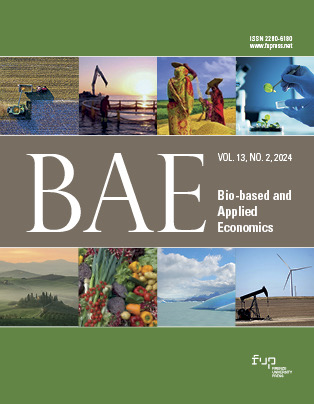Published 2024-03-09
Keywords
- barley price,
- regime change,
- GARCH,
- Markov-Switching
How to Cite
Copyright (c) 2024 Mohammad Mehdi Farsi Aliabadi, Behzad Fakari

This work is licensed under a Creative Commons Attribution 4.0 International License.
Abstract
In Iran, barley is considered the second-largest cultivated crop. However, more than 40% of Iran’s requirements are imported from the international market. Due to the importance of barley in providing livestock feed and food security, its price variation is a critical issue for Iranian governments. Therefore, in this study, the influence of different determinants of domestic barley price, such as international price, real effective exchange rate variation, price volatility of barley, Russian-Ukrainian armed conflict, and the existence of economic sanctions, has been investigated by applying the Markov-Switching model. The main results indicated that in both states, the real effective exchange rate was the primary determinant of the domestic price. Moreover, the impact of international price in first state is much more powerful than the second state. Also, the results revealed that the persistence of US economic sanctions amplified barley prices in both regimes. According to these findings, the government should eliminate interventions in the barley market by utilizing the preferential exchange rate for importing barley. Moreover, pursuing a political agenda to create a stable political condition and lift economic sanctions should be considered the priority for the government to mitigate the barley price upsurge.






